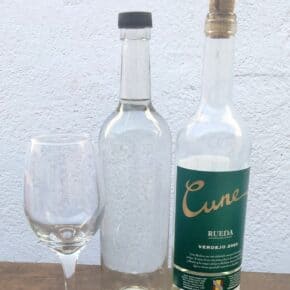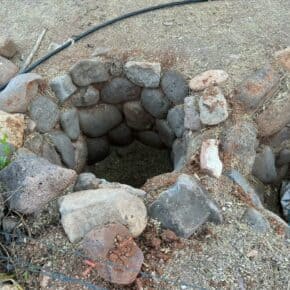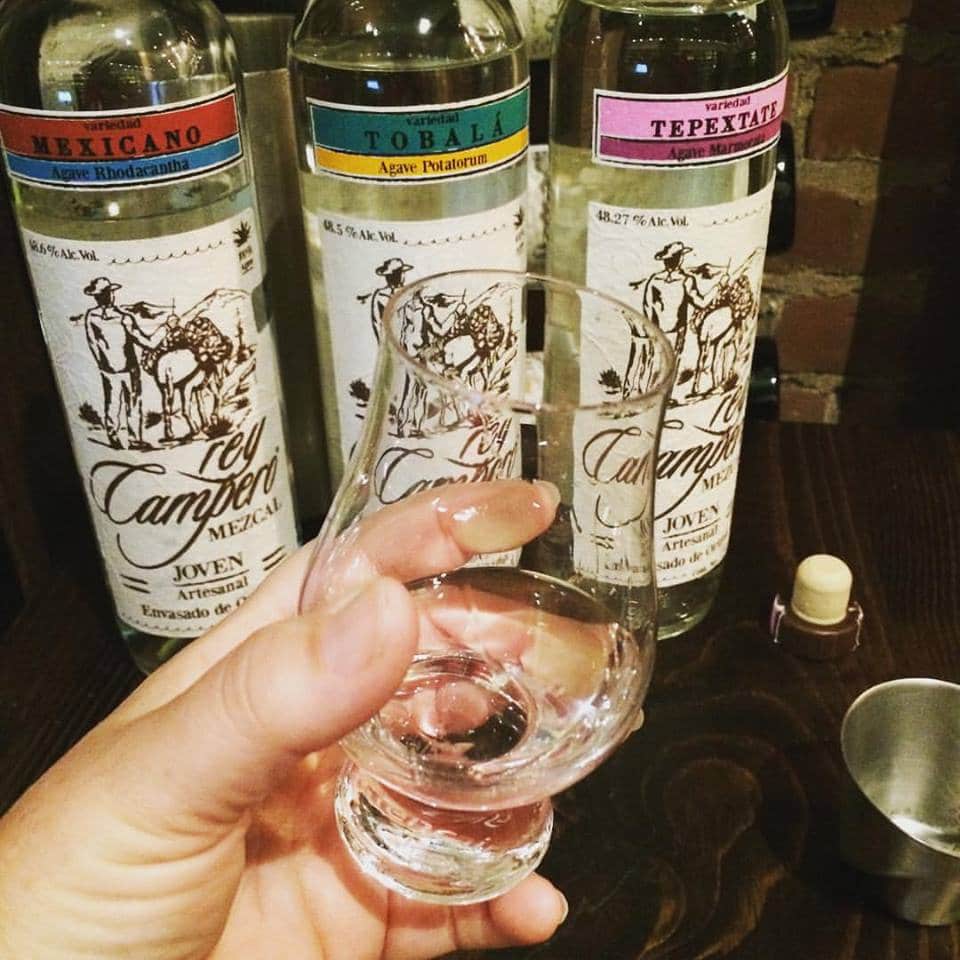What is saite? Saite is cooked, shredded agave that’s ready to be fermented and then distilled to make mezcal. The term is used in Sonora, Mexico, by the producers of bacanora, the state’s regional mezcal.
Imagine a traditional vinata in the wild mountains of Sonora. Beneath deep blue skies, a bacanorero and his helpers are unloading steaming agave from a pit oven. They transfer the cooked hearts to a wooden trough (called there a cuba) to mash it with an ax. This laborious process creates juicy saite, which they haul to a stone-lined underground tank called a barranco. The producer adds the saite one layer at a time, sprinkling it with water, and tamping it down with a large wooden pestle. It’s a hot day, so they use a fair amount of water. When the water and saite mixture is right, the bacanorero seals the barranco and waits for the mosto to develop. Within a couple of days, they’ll have a bubbling brew that they will eventually distill into bacanora.
Note: Bacanora producers use a wide range of methods, from the traditional to the industrial, with plenty of people employing a mix of old-fashioned and modern techniques. The above is a description of one variation on a more traditional process.
To learn your bacanora basics, check out What is bacanora? Leigh Thelmadatter’s Sonoran women look for a better life for themselves and their communities will give you a view of the current bacanora landscape. If you’re more interested in an armchair road trip, check out A bacanora adventure in Sonora or Journey to my bacanora roots.
Bibliography:
“Manufacture of Mezcal in Sonora, Mexico” Conrad J. Bahre and Davide E. Bradbury, 1980, Economic Botany Vol.34













Leave a Comment